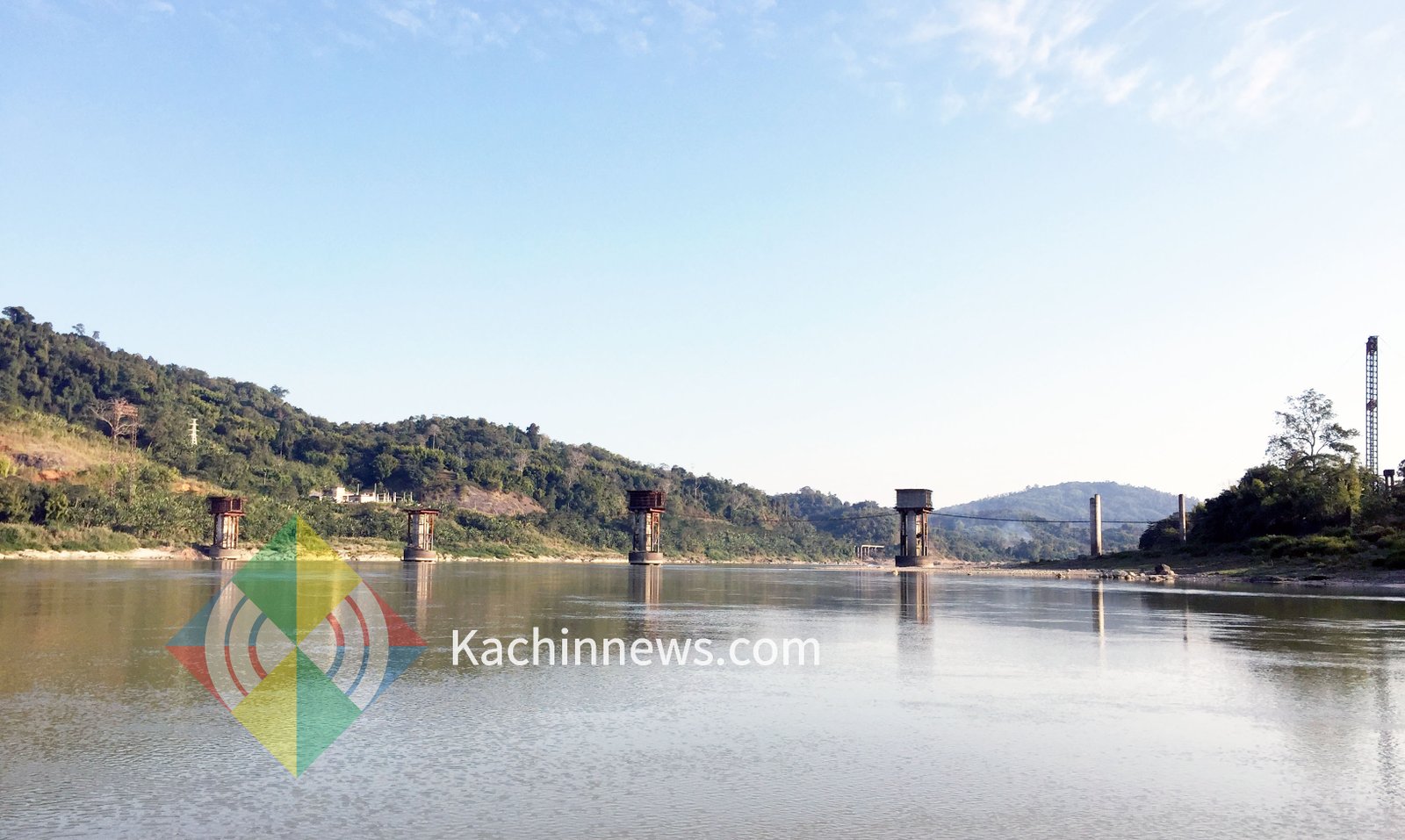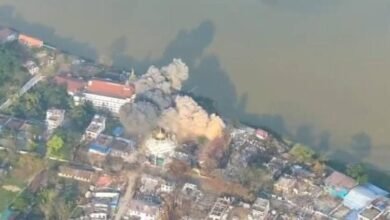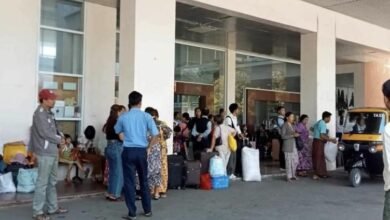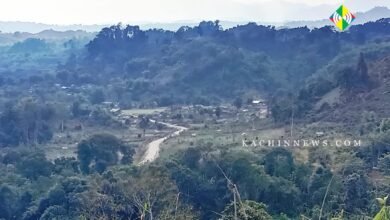Military Council’s Myitsone Dam Restart Amid Battlefield Losses

With tensions escalating in Kachin State, Burma’s Military Council is set to revive the contentious Myitsone Dam project, dormant for nearly 13 years since its suspension by the Thein Sein government. Critics view this move as a calculated strategy by the military regime to divert attention from the mounting political crisis, especially as Kachin resistance groups tighten their grip over the state’s borders.
The regime assembled a steering committee, the ‘Upstream Ayeyawady Confluence Basin Hydroelectric Project Steering Group’, charged with revitalising the Myitsone project, located where the N’mai Hka and Mali Hka rivers converge to form the Irrawaddy River, in late April and officially announced it on May 17.
Political analysts have been quick to point out it’s a diversion tactic after losing numerous military bases to resistance forces led by the Kachin Independence Army (KIA) in Kachin State, with hopes pinned on a favourable response from China.
“They (Burma military) use some tricky tactics whenever facing a political crisis or hard times. However, in my opinion, it’s impossible to re-start the Myitsone Dam Project because fighting has intensified in the Myitsone area,” an analyst remarked.
Since March 7, the KIA and allied forces have initiated offensive operations against the Burma army in Kachin State. Within two months, they have captured over 100 military camps of various sizes and six towns from the Burma army. As the offensive momentum continues to grow, the conflict has intensified in Waingmaw Township, separated from Myitkyina by the Irrawaddy River. KIA and allied forces have already taken control of Light Infantry Battalion 321 in Shwe Nyaung Pin, which protected the regime’s positions in Waingmaw town.
The Myitsone project entails the construction of five dams on the N’Mai River, one on the Mali River, and one on the Irrawaddy River, located four miles downstream from the confluence of the two rivers. This ambitious plan involves the creation of a total of seven dams to harness hydroelectric power. The agreement for the entire project was signed in 2006 between the military regime at that time and China Power Investment Corporation. The dam was intended to generate 6,000 megawatts of power, primarily for export to Yunnan, China.
The analyst said the junta assembled an steering committee of 11 people at the end of April. At the start of May, the KIA launched a second major offensive, which saw the seizure of many more Burma army positions. Facing endless defeats on the battlefield, the regime wants to pressure the KIA into a ceasefire.
“In my view, the Military Council has sought to slow down the KIA’s offensive momentum with China’s support, aiming to find a solution to cease armed clashes in Myitkyina, Waingmaw, Chipwi, and Hsawlaw townships.”
A young woman vowed to vehemently oppose the implementation of the Myitsone project for as long as she lives.
“I was forced to relocate from the Myitsone area when I was very young, and at that time, I didn’t fully comprehend the negative impacts of the Myitsone Dam Project. However, now I understand the potential harm it could bring to our country. As a local youth from this area, I am committed to educating the younger generations about the dangers associated with it. It’s important to work together to protect our environment.”
The tasks of the steering committee, in collaboration with the leadership of SPIC Yunnan International Power Investment Co., Ltd (SPICYN), are research activities, technical solutions, and public relations activities for the Myitsone project, and to provide guidance and decision-making to the technical working group, according to a statement released by the Military Council.
When the dam project was first started, the government confiscated land from five villages surrounding Myitsone—Awng Ja Yang, Dau Pan, La Hype, Myitsone, Tang Hpre—resulting in the forced relocation of thousands of residents. Later, SPICYN established a new village called Aung Myin Thar to provide resettlement for the displaced people. Families who owned extensive land in their previous villages were allotted only one house, each built on a plot measuring 40′ by 60′, in the new village. Many continue to face economic hardships after losing their farms due to the displacements and the inadequate housing the company offered them.
Dam breaches in China and globally have had devastating effects on local communities and the environment and resulted in the loss of human lives. Environmental experts emphasize the urgent need for public opposition to the Military Council’s decision to proceed with a large-scale project that poses significant harm to the public, all for the sake of appeasing China.
The Irrawaddy River serves as Burma’s vital artery, sustaining millions of livelihoods. Environmentalists pointed out that if we do not preserve and protect it, the country will never break from its systemic poverty.
“I do not think the Myitsone Dam Project will ever happen. Locals, environmentalists, and people across Burma are united in their opposition against it, and we will continue to strongly oppose it,” says Ma Seng Ni, the deputy director of Kachin Environmental Group told KNG.




